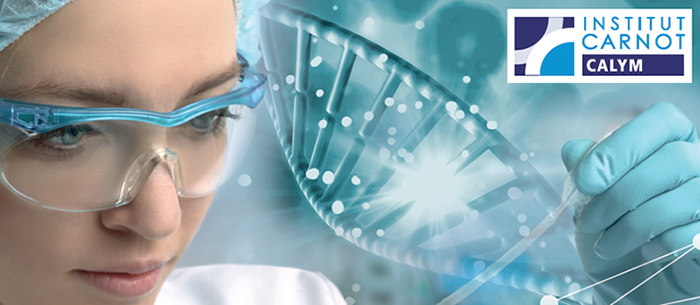Artefact, Microsoft and the Carnot CALYM Institute combined their expertise to build a Lymphoma Data Hub enabling researchers to leverage AI for accelerated early-stage diagnosis and therapeutic innovation.
A technology partnership to improve lymphoma diagnosis and treatment
Artefact transforms data and AI into value and impact not only for clients, but for humanitarian causes as well. The Artefact 4 Good programme gives our employees the chance to contribute to meaningful projects. Microsoft’s Share AI skills sponsorship programme allows employees to do the same. The Carnot CALYM Institute, an international academic research consortium, constantly seeks new ways to fight against lymphoma. Members from all three organisations joined together to see how AI could be used to identify new avenues of research.
Context and challenges: what lymphoma is and how AI can help
Lymphoma is a blood cancer that begins in infection-fighting cells (lymphocytes) of the immune system. It is the most common blood cancer and the 6th most frequent cancer worldwide, with some 80 sub-types. Due to their heterogeneity, lymphomas are difficult to diagnose and require different therapeutic strategies.
Because AI can analyse and integrate massive amounts of data, CALYM believes it can play a major role all along the innovation chain in R&D in Health, from disease characterisation and diagnosis to drug development and personalised therapeutic strategies.
For the Lymphoma Data Hub project, CALYM already had assets to facilitate AI integration:
But there were also obstacles:
Delphine SONDAZ, Project Leader, Carnot CALYM Institute
Solution: development of a collaborative Lymphoma Data Hub
To improve and facilitate the ethical exploitation of massive quantities of health data, CALYM asked Artefact to develop an environment allowing collaboration, data sharing and state of the art data learning in a real-time and secured way, in order to increase the number and quality of research partnerships for the benefit of lymphoma patients.
CALYM had five requirements. Their solution had to be traceable, modular, collaborative even for remote work, agile, and above all, secure.
Our solution was a Lymphoma Data Hub: a platform enabling the collection, processing and sharing of data, functioning like an AI Factory with raw materials, where all data available for research projects is concentrated in a single environment.
The success of this environment is ensured by two essential pillars:
1. Data governance: governance guidelines for the data platform must be created to define and maintain roles and responsibilities as well as processes to follow. These include clear and managed data supervision, data security according to current legislation, data monitoring, data quality, and data accessibility.
2. Architecture: the security, quality and confidentiality of data must be ensured by defining the ideal infrastructure for the collection, treatment, storage and sharing of data. Microsoft’s Azure cloud solution was selected for deployment of the Lymphoma Data Hub. Azure is the first cloud provider with HDS* certification in France, and enables clear definition of roles, multiple security controls, performance optimisation, scalability, traceability and data organisation.
This hub for data sharing and algorithm development is also an evolutive catalogue of data available for research collaborations with partners who share our vision. Its use will strengthen academic and partnership research to improve the understanding, diagnosis and treatment of lymphoma.
*Hébergeurs de Données de Santé (Health data hosting)
Results: Measurable improvements in cancer detection accuracy
Prior to the launch of the Lymphoma Data Hub, a diagnostic pilot was carried out using computer vision to develop a deep-learning algorithm to assist pathologists in diagnosing follicular lymphoma, one of the disease’s many subtypes. Artefact’s experiment was successful in detecting the presence of cancer with an accuracy of between 90% and 98%.
Eight other research projects for the near future have also been identified, ranging from earlier disease detection to enhanced monitoring of its evolution in response to medical care.
Artificial intelligence represents a new opportunity to improve care for patients with lymphoma. As the Lymphoma Data Hub evolves and grows with input from members of the consortium, the disease will be better understood, allowing new avenues for the development of treatments and drugs to be explored; diagnosis will become faster and more accurate, enhancing patient comfort; and treatment responses will be better anticipated, leading to more personalised therapeutic strategies.
Emmanuel Gomez, Director of R&D, Carnot CALYM Institute

 CLIENT CASES
CLIENT CASES




